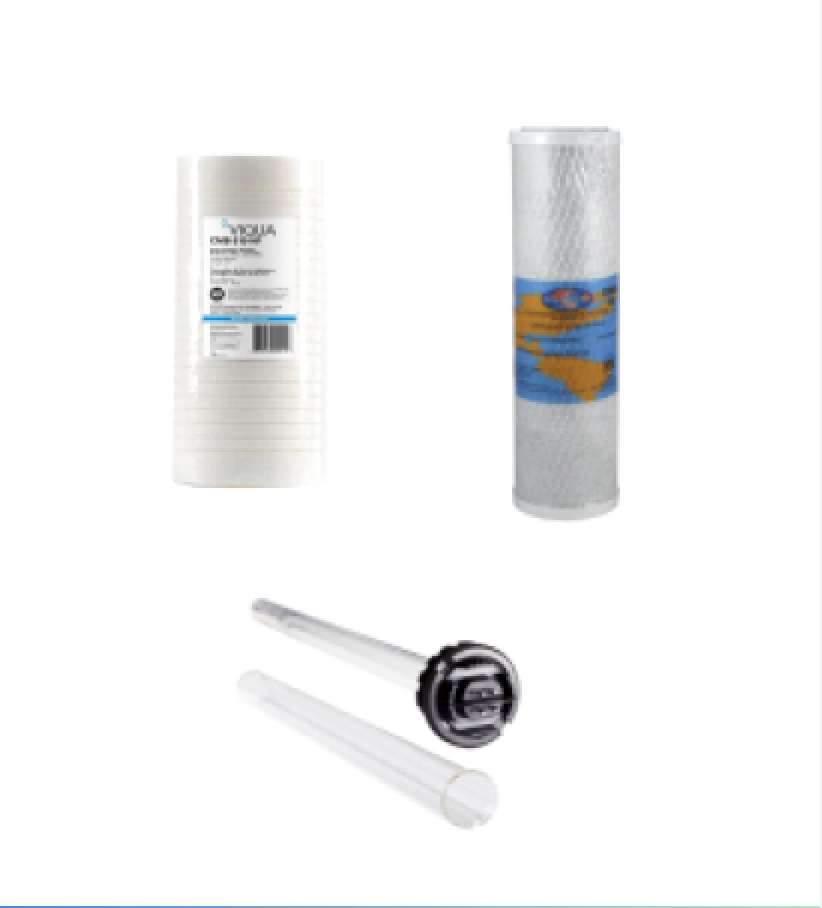Pesticides, herbicides, and insecticides can potentially make their way into our drinking water supply. Sometimes it take decades before these chemicals show up in water, but they're a continual threat to our groundwater quality.
How to Remove Pesticides from Water
How to Ensure Drinking Water is Safe from Pesticides
According to a recent groundwater study published by the United States Geological Survey (USGS), nearly 90% of water samples collected contained five or more different pesticides.
In addition, the USGS found at least 143 pesticides in the groundwater of 43 states.
Nearly 90% of water samples contained 5 or more pesticides
How do Pesticides and Herbicides Enter Our Water Supply?
The U.S. is a major food supplier for the world, which means pesticide chemicals are abundantly used to control weeds, insects and other organisms.
Pesticides applied decades ago are just now showing up in our ground water. That's why it's important to consider how chemical applications today can affect our water for decades to come. Below are a few ways that chemicals get carried to our groundwater supply.
Rainwater
Runoff
Rainwater washes freshly applied herbicides from lawns
Drain
Dump
Leftover chemicals are poured down floor drains or sinks
Melted
Snow
Melted snow carries pesticides into underground water
It's not always easy to determine the source of contamination. But pesticides and various chemicals seeping into our water tables are a major issue.
Cropdusting, mass application by farm equipment, and even washing rags with pesticides in them are ways that pesticides are entering our water.
Because these chemicals are linked to serious health effects such as birth defects, cancer, reproductive issues, and neurological problems, many households are looking for a way to ensure their water is safe.
Should I Worry about Pesticides in my Drinking Water?
Most public water suppliers do a good job of filtering out impurities, but many contaminants found in our public water supplies are not regulated or standards enforced.
Also, millions of homes and cottages are on private wells where insecticides, pesticides and herbicides are not monitored or regulated, and can easily enter the water source for the well.
How to Remove Pesticides and Chemicals from Drinking Water
We cannot control or entirely prevent pesticides, insecticides and herbicides from entering our water supply. But we can take steps to ensure these chemicals are not in our household's drinking water.
Reverse Osmosis (RO) is the most effective and affordable way to remove these pollutants. Reverse Osmosis is a water treatment process that removes contaminants from water by using pressure to force water molecules through a semipermeable membrane. During the process, contaminants are filtered out and flushed away-- leaving pristine, delicious drinking water.
The "GAC" or granulated activated carbon filters in a reverse osmosis drinking water system are able to reduce herbicides, pesticides and insecticides by 97-99%.
RO water filtration systems are also effective in filtering out THMs like chloroform, organic chemicals, and many VOCs that are components of gasoline, solvents and industrial cleaners. Reverse osmosis can remove up to 99% of dozens of different contaminants.
Top-Selling Reverse Osmosis Drinking Water Systems
| Sold out | Sold out | Sold out |
|
|
|
|
|
|
|
|
|
|
|
|
|
|
|
|
|
|
|
|
|
|
|
|
|
|
|
| | | |

